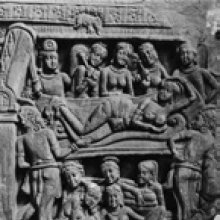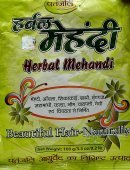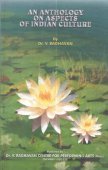Indian: 2 definitions
Introduction:
Indian means something in the history of ancient India, biology. If you want to know the exact meaning, history, etymology or English translation of this term then check out the descriptions on this page. Add your comment or reference to a book if you want to contribute to this summary article.
Images (photo gallery)
(+480 more images available)
India history and geography
Source: Google Books: The Kilaya Nirvana Tantra and the Vajra Wrath Tantra (history)The Indians were perceived by the ancient Tibetans as their revered role models, especially with regard to Tantric texts.—In studying the production of esoteric Buddhist Tantric texts in the early years of post-imperial Tibet, roughly between the start of the ninth century and the end of the tenth century, we are quite possibly also gaining at least a few useful insights into the way in which Buddhist Tantric texts were produced in India. It would not be surprising if the Indian pre-history of the famous Sanskritic Tantras of the gSar ma pa period turned out to share at least some similar features with the origins of the Tibetan-composed rNying ma pa Tantras. The two traditions were after all contemporaneous, and the Tibetans clearly took the Indians as their revered role models in every respect. But while the Indian historical record is comparatively thin, much more evidence survives in Tibet.

The history of India traces the identification of countries, villages, towns and other regions of India, as well as mythology, zoology, royal dynasties, rulers, tribes, local festivities and traditions and regional languages. Ancient India enjoyed religious freedom and encourages the path of Dharma, a concept common to Buddhism, Hinduism, and Jainism.
Biology (plants and animals)
Source: Google Books: CRC World Dictionary (Regional names)Indian in Ivory Coast is the name of a plant defined with Xylopia aethiopica in various botanical sources. This page contains potential references in Ayurveda, modern medicine, and other folk traditions or local practices It has the synonym Xylopicrum aethiopicum Kuntze (among others).
Example references for further research on medicinal uses or toxicity (see latin names for full list):
· Mém. Soc. Phys. Genève (1832)
· African Journal of Traditional, Complementary, and Alternative Medicines: AJTCAM/African Networks on Ethnomedicines. (2008)
· Bothalia (1983)
· Supplementum Plantarum (1782)
· Fitoterapia. (2004)
· Species Plantarum (1753)
If you are looking for specific details regarding Indian, for example extract dosage, pregnancy safety, diet and recipes, side effects, chemical composition, health benefits, have a look at these references.

This sections includes definitions from the five kingdoms of living things: Animals, Plants, Fungi, Protists and Monera. It will include both the official binomial nomenclature (scientific names usually in Latin) as well as regional spellings and variants.
See also (Relevant definitions)
Starts with (+183): Indian abutilon, Indian acalypha, Indian aconite, Indian aconite root, Indian acrocephalus, Indian alder, Indian almond, Indian aloe, Indian aloewood, Indian Architecture, Indian arrow wood, Indian arrowroot, Indian Art, Indian asoka, Indian atalantia, Indian bael fruit, Indian balm, Indian balm of gilead, Indian banyan, Indian barberry.
Ends with: Naked indian, Paint indian, Sindian.
Full-text (+19839): Naiyagrodha, Kurankara, Vallaki, Vina, Svara, Pika, Majjika, Lakshmana, Parapushta, Mimamsa, Kokila, Vanapriya, Vitapin, Bharataputra, Nyagrodha, Kakud, Shrimukha, Anyapushta, Tamil, Jatamamsi.
Relevant text
Search found 322 books and stories containing Indian; (plurals include: Indians). You can also click to the full overview containing English textual excerpts. Below are direct links for the most relevant articles:
Indian Diaspora: An Overview < [October – December, 2006]
Sanctions Against South Africa: A Critique < [May 1949]
Acculturation and Assimilation < [April – June, 2000]
Rasa Jala Nidhi, vol 5: Treatment of various afflictions (by Bhudeb Mookerjee)
Part 25 - Ar-Razi and the Indian knowledge of metallic chemistry < [A Brief History of Indian Chemistry and Medicine]
Part 1 - Introduction (justifying ancient Indian knowledge of the use of mercury) < [A Brief History of Indian Chemistry and Medicine]
Part 7 - Chemists of the Metallic School: Ravana, King of Lanka < [A Brief History of Indian Chemistry and Medicine]
Diaspora of Bhuta (Daiva) worshipping cult—India and Indonesia (by Shilpa V. Sonawane)
Part 3.1 - Hindu Gods and Goddesses of Bali < [Chapter 4 - Inter-Disciplinary Analysis]
Part 3 - Religion and Culture of Bali (Introduction) < [Chapter 4 - Inter-Disciplinary Analysis]
Folk Tales of Gujarat (and Jhaverchand Meghani) (by Vandana P. Soni)
Impact of Vedic Culture on Society (by Kaushik Acharya)
Aryan Invasion: a theory or a myth! < [Chapter 1]
Concept of Dāna and Nature of Donee Brāhmaṇas < [Chapter 2]
1.E: Buddhist Expression of Charity < [Chapter 2]
The Myths Of The North American Indians (by Lewis Spence)
Related products
(+138 more products available)











